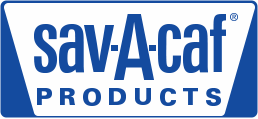
Your guide to goat care after kidding
Here are some basic steps to help guide your goat care after kidding.
Steps For Kid Care
- Provide respiratory support. Make sure newborn kids are breathing properly as soon as they emerge. Clear nasal passages and mouths of mucus and assess them for vigor. If they seem to have difficulty, rub them with straw or a towel. You can also try inserting a piece of straw or twig in their nose to help stimulate breathing. If the kid seems nonresponsive, holding them upside down and patting them to get excess fluid to drain out of lungs may be beneficial as well.
Typically, the mother will take care of the first bath, but if you’re delivering in cold temperatures you should also dry them off thoroughly with a towel before letting the bonding process begin.
- Ensure access to colostrum. The most important part of kidding is ensuring babies ingest colostrum soon after birth. Pull a few streams of milk from the doe to make sure the milk isn't blocked and watch the baby kid to make sure it drinks. If the kid is having trouble finding where to feed from, give it some direction.
If kids don’t nurse within two hours, start bottle feeding a goat colostrum replacer like Sav-A-Kid® Colostrum Replacer. Continue to feed only colostrum for the first 24 hours of life.
Colostrum is a thick milk that provides high levels of fat, protein, vitamins and antibodies. This is how they start to build their immune systems. The faster they get colostrum, the faster they’re protected until they begin producing their own antibodies.
- Support nutrition. If supplemental milk is needed due to stress or low production, consider a milk replacer like Sav-A-Kid® Milk Replacer that’s designed to mimic doe milk and provide high-quality nutrition to support digestive, muscle and bone development for goat kids.
Caring For Does
While the new kids on the block may garner the most attention, your leading lady also deserves it too. Here are some quick tips to help her be the star of the show.
- Promote hydration. During delivery, you want to ensure does have access to warm water. Adding molasses or electrolytes to it can provide an added boost of energy.
- Monitor afterbirth. Watch to ensure placentas pass soon after birth and let them detach naturally. Though it’s tempting to assist with the process, it’s best for afterbirth to let go on its own. Seek help from your veterinarian if placentas don’t pass or detach as this can lead to infection.
- Monitor udder health. Ensure teats aren’t plugged and milk is flowing by stripping a few streams of milk from each quarter shortly after birth (or even once or twice during labor as this can support the release of oxytocin!). Monitor for signs of mastitis such as redness or being hard to the touch following kidding. A firm, swollen udder is common at kidding, especially for a doe. A firm quarter a week or two later can be cause for concern. Early detection of infection is critical for mom and kid health.
- Introduce concentrate slowly. Mothers may not be interested in eating right away since there are new babies to attend to, but she needs the energy for colostrum and milk production. When she’s ready to eat, it’s best to start her on grains slowly and make sure she has access to the best quality hay.
- Administer dewormer. Does are vulnerable to increased parasite loads after birth, and it’s smart to take control of potential issues before they begin. Since many dewormers require two doses, some people administer the first dose during the late stages of pregnancy and the second soon after birth. Some wait to deworm after kidding. Either way, this is an important step to take with the guidance of your veterinarian.
- Collect colostrum. As the 24-hour period after kidding comes to a close, it’s a good time to collect colostrum for your colostrum bank. Having that and at least a gallon of milk on hand is helpful, although milk and colostrum replacers are always a solid and easy option as well.
Looking for more tools and insights to support your young goats? Find additional tips and browse Sav-A-Kid products.



